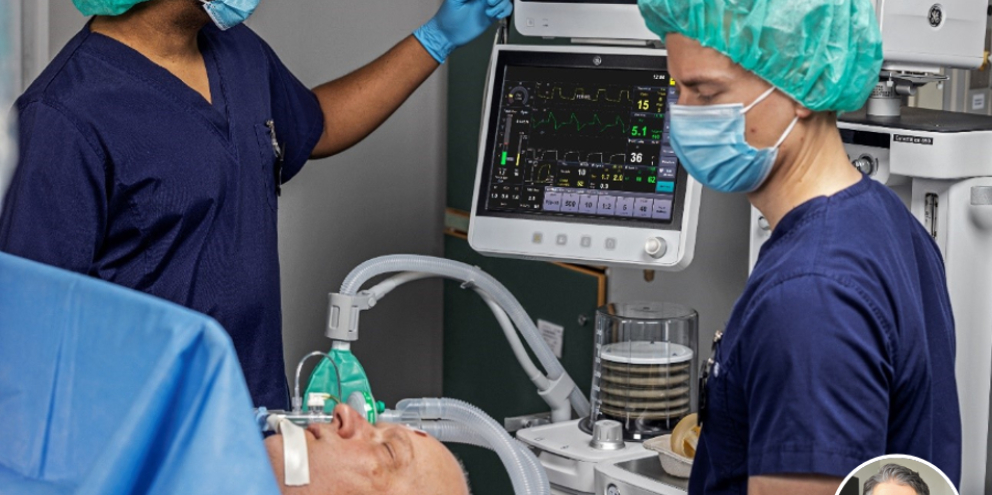
The Anesthesia Patient Safety Foundation (APSF) works to improve patient safety with initiatives and recommendations in areas of culture, knowledge, and learning. Is there anything else specific to APSF you would like people to know?
In the field of Anesthesiology, improvements in patient safety have been significant and have been driven by research, education, and technology. Today, the risk of serious adverse events for a healthy person having a routine surgery is similar to that of commercial air travel. The progress is remarkable.
The specialty of Anesthesiology prides itself in embracing new technologies and driving best practices. To further this aim, APSF has a proud tradition of partnering with industry leaders to incorporate medical technology and pharmaceutical manufacturers’ perspectives in the approach to patient safety issues. This effective collaboration has undoubtedly contributed to the advances in patient safety.
APSF benefits significantly from the volunteer efforts of dedicated clinicians which is a testament to the credibility and admiration that the organization has earned over time through its integrity and dedication to patients and clinicians.
The APSF Newsletter is one most widely read publications globally and is available in six languages. The international reach of APSF has grown significantly, transitioning from a historically US readership to today having roughly 50% of readers in international markets.
What are some of the key things or initiatives APSF is involved with?
APSF has an active board of directors who oversee organizational activities throughout the year. A key yearly deliverable is identifying the top ten APSF patient safety priorities.
In 2022, the top three priorities are 1) developing a culture of safety, 2) ensuring effective teamwork, and 3) mitigating harm from patient deterioration.
In September of each year, APSF holds its annual Stoelting Conference which is attended by clinicians, health system stakeholders, and industry representatives. The conference traditionally focuses on a scientific or practice area tied to patient safety. This year, the conference focus is on “non-operating room anesthesia” or “NORA”.
I am proud that GE HealthCare is a sponsor of APSF to enable scientific exchanges such as the Stoelting conference to take place and facilitate the scientific dialogue to advance patient safety.
I am also privileged as an APSF board member to be on this year’s Stoelting Conference planning committee to develop the APSF NORA practice recommendations.
Why did the APSF board feel there was a need to update Anesthesia Monitoring recommendations?
With the APSF focus on patient safety, the organization actively considers available scientific evidence that impacts patient care and the delivery of anesthesia services. A specific APSF committee, the Committee on Technology (COT), is tasked with assessing and prioritizing the evaluation of new technologies and evidence.
The committee then determines whether or not there is an impact to patient care. If yes, how that impact should then be communicated to the APSF community.
In the case of monitoring recommendations, The APSF COT reviewed statements for patient monitoring during anesthesia from professional organizations around the world and found inconsistencies that could lead to patient safety implications.
To address inconsistencies and omission of information from various statements, APSF elected to publish its own recommendations to highlight the differences in others. The primary goal was to identify monitoring practices that are not part of existing statements but are believed to enhance patient safety.
A secondary goal was to encourage guideline alignment across anesthesia professional organizations to deliver best practices in patient care, regardless of geography.
The theme with the updates focuses on continuous monitoring practices, can you touch on why that is important regarding awareness prevention and postoperative residual muscle weakness?
Postoperative residual muscle weakness is caused by incomplete antagonism or reversal of neuromuscular blocking agents. These important medications are required for many types of surgeries and have one function which is to induce muscle weakness or paralysis.
These medications do not create sedation, amnesia, or have anesthetic properties, thus if a patient is given neuromuscular blockers while awake or has residual neuromuscular blockade, this manifests clinically as muscle weakness without sedation.
There is a spectrum of potential unwanted outcomes with residual neuromuscular blockade. In its most mild form, residual weakness may not be recognized by caregivers or patients and would only be detected through a specific assessment.
Moderate residual weakness could be associated with patient distress through a feeling of weakness, trouble breathing, or trouble swallowing, to name a few side effects. Clinically this weakness could be observed as compromised respiratory status leading to oxygen requirement and CO2 retention. Additional risks include the aspiration of liquids, foods, and gastric contents into the lungs.
Finally, at its most severe, residual weakness may result in an immobile patient who suffers respiratory arrest while being completely aware of the events. In addition to the medical risk, patients can suffer from PTSD from this type of event.
What are some examples of traditional qualitative neuromuscular blockade monitoring currently used?
Qualitative assessment of neuromuscular blockade may come from clinical signs and dedicated monitors. Clinical signs used to judge sufficient recovery of muscle strength include tidal volume measurement, patient head lifting, and grip strength.
Qualitative monitors utilize a train of four (TOF) count through electrical stimulation of a peripheral nerve to assess strength recovery.
How accurate are these qualitative measurements?
Unfortunately, qualitative measures have been shown to be very unreliable. For example, the TOF count from a qualitative monitor may suggest recovery when a significant degree of weakness remains.
In the case of a TOF count of 4, up to 75% of receptors may remain occupied by the blocking agent.
Clinical signs are very subjective and confounded by various aspects of the patient’s condition including measurement during a period where the patient is emerging from anesthesia which impairs cognition, arousal, and the ability to follow commands.
Compared to qualitative measurements, quantitative neuromuscular monitoring, such as electromyography, have been shown to be the most effective technologies to assess recovery from neuromuscular blockade.
The recommendations mention continuous airway pressure monitoring to facilitate protective lung ventilation. Why is this preferred over current practices?
The recommendation related to airway pressure monitoring is targeted to bring professional society statements into alignment with technology capabilities and best practices.
It is established that lung protective ventilation strategies are important to avoid pulmonary trauma due to over-distention or repeated collapse and re-expansion of airways. The APSF statement highlights that although pressure monitoring is available with anesthesia system ventilators and pressure monitoring is best practice, statements regarding pressure monitoring are not consistently in place within global practice recommendations.
How will these updates improve clinical practice and patient outcomes in the OR?
Both neuromuscular monitoring and airway pressure monitoring statements highlight the importance of these patient safety technologies and APSF is utilizing its credibility and wide readership to create awareness.
I am optimistic that anesthesia societies will adopt these statements to amplify the message and individual providers and groups will adopt these practices to drive consistency and improve the quality and safety of care where gaps exist.
Do you foresee any barriers to recommendation adherence from either the clinician’s standpoint or a logistical standpoint?
Changing clinical practice is difficult. In the case of airway pressure monitoring, I do not perceive barriers or resistance as this recommendation is standard practice for most providers today. I also believe professional societies will include this recommendation as this may be an oversight rather than intentional exclusion.
I do believe there is continued discussion about qualitative neuromuscular monitoring techniques vs quantitative monitoring in daily practice which could lead to resistance. Many clinicians perceive current practice is safe, given the appropriate vigilance in the practice of neuromuscular blockade.
How do GE HealthCare solutions for patient monitoring support these new guidelines?
GE HealthCare monitoring and anesthesia technologies and algorithms set the global standard for quality, reliability, and performance. Our ventilators include pressure monitoring in addition to multiple additional monitored parameters of the individual patient's ventilation settings and physiologic response.
Our GE HealthCare NMT module offers quantitative electromyography neuromuscular monitoring at the bedside in the ICU, and in the operating room where muscle relaxants are used regularly.
In addition to quantitative neuromuscular monitoring, GE HealthCare has also developed the Adequacy of Anesthesia concept, which combines quantitative neuromuscular monitoring with additional measurements of depth of anesthesia to support clinical decision-making in the operating room for personalized, precision anesthetic administration.

John "JW" Beard, MD, MBA
John “JW” Beard, MD, APSF board Member and Chief Medical Officer of GE HealthCare – Patient Care Solutions. Prior to entering the medical industry, Dr. Beard was in clinical practice for fifteen years as an anesthesiologist. While in clinical practice, Dr. Beard led multiple quality improvement initiatives and held leadership positions including Chairman and Medical Director of the Department of Anesthesia.








